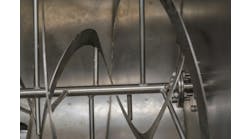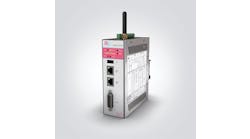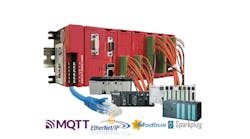After working as a semiconductor process engineer, Hank Hogan hung up his cleanroom suit and now writes about process control and other technologies from Austin.
Because they've gotten smarter and have additional capabilities, panel meters now can take over some functions previously handled by PLCs. For instance, a panel meter with math capabilities can keep count and shut off a machine after a fixed number of cycles.
For those who want to put these capabilities to work, a panel meter-based solution offers advantages. It's less expensive to implement and easier to set up than a PLC-based system. Panel meters also can offer an alternative control path, important when implementing a redundant solution.
Balancing these positives is a potential negative: Panel meters might be a bit slower in executing functions compared to a PLC.
A final factor to consider is that panel meters are likely to be present in any case because they provide vital visibility, says Joe Ryan, marketing manager at Precision Digital. "Operators always will need easy-to-understand information, thus, the presence of the panel meter."
While discussing panel meter technology trends, Ryan points to two of his company's products in particular. The ProVu series dual-input meters offer math functions. The panel meters can add, subtract, average, divide and multiply. As a result, they can replace PLCs used to track diesel fuel consumption or ones that do mixing-ratio calculations. For these applications, panel meters are easier to set up and provide better process visibility, according to Ryan.
Also Read: Industrial Panel Meters: What They Can Do For You Today
[pullquote]As for the second category of advanced panel meters, he mentions the company's Modbus scanners. These poll up to 16 Modbus variables from a variety of devices and can do math. Consequently, they offer a way to easily display information from multivariable transmitters, such as level and temperature, as well as provide analog output of the data. In the past, these tasks would have required a PLC.
Panel meters incorporate such capabilities to improve process visibility and keep up with transmitter enhancements, Ryan indicates. Because this is an ongoing need, he looks for the trend toward more intelligent and higher-functioning panel meters to continue.
Jeff Thornton, product manager for the panel meter and interface division of Red Lion Controls, notes that the automation industry is moving toward redundant control, driven by increased safety demands and regulatory requirements. Satisfying that need is something that can be handled by a panel meter that can do math and other functions previously provided by a PLC.
"Should something happen to the PLC, the panel meter is still there, capable of performing the most critical tasks," he says of this approach to redundancy. He points to the company's series of panel meters. They offer the ability to display readings in red, orange or green, thereby supplying a visible indication of the status of a process or machine. This is particularly important when there are many different variables that have to be monitored, with operators having to ascertain the health of a system at a glance.
As for the future, Red Lion is working to further expand functionality by enabling users to create a specialized panel meter that pulls in data from various sources. The result will be an output tailored to track the status of a specific process without the need to do so with an array of panel meters. The company expects to have these new products available shortly.
Daniel Sparks, director of product marketing at Omega Engineering, notes that one of his company's latest panel meter offerings has a graphical display, full natural-language menus, USB and wireless communication, and onboard data-logging capabilities. Other panel meters offer a response time of 300 ms and provide a local indication of the state of a machine or process.
Sparks notes there was a time a decade or so ago when discrete panel-meter-based solutions were losing market share to PLCs. He says that is no longer the case, in part because panel meters are more capable than before, while still being easier to implement than PLCs and still providing a local display of process variables. As a result, panel meters offer advantages both as a replacement for and for use in conjunction with PLCs.
"They are a cost-effective alternative to adding PLC control and measurement loops, and most can be configured to communicate to PLCs for enterprise data handling and process management applications," Sparks says.




